Tag: Animal health and wellbeing
In our last blog we introduced you to Steve Unwin, veterinary officer at Chester Zoo. Steve is part of an in-house team of vets and nurses that provide clinical care to the animals at the zoo. In addition to this the team support some of our field conservation projects and are also committed to sharing their skills and training other organisations based here in the UK and overseas.
One of the projects Steve is involved in is working towards becoming a major force in shaping conservation medicine work across Indonesia and Malaysia.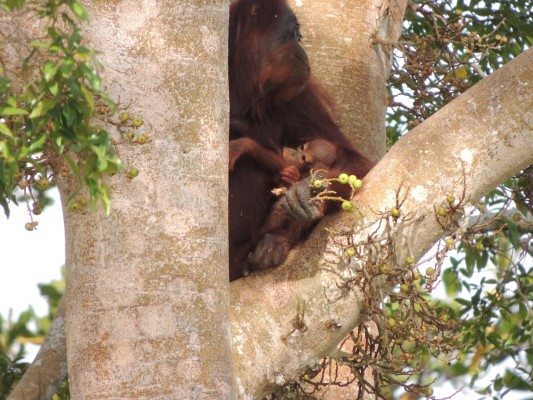
The Orangutan Conservancy – Orangutan Veterinary Advisory Group (OC/OVAG) is a network of experts working in orangutan conservation. Initiated by Orangutan Conservancy and supported by Chester Zoo, the group aims to bring together those working with orangutans in order to share expertise, knowledge and the exchanging of ideas to move forwards with effective orangutan conservation.
Communication between conservationists and scientists is crucial to moving forwards with orangutan conservation. The many projects working to protect this endangered animal are doing an amazing job and to strengthen their work, contact between field projects, sanctuaries, zoos, academia and government in a range of countries is crucial in moving forwards.
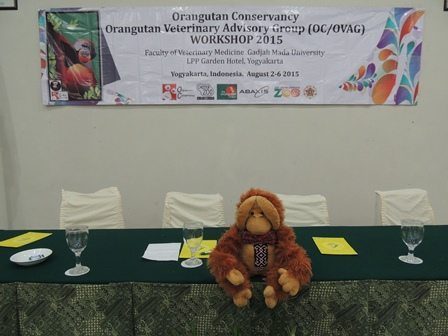
The veterinary staff members involved in OC/OVAG are at the frontline of addressing the welfare and conservation needs of orangutans and other wildlife. Enhancing their knowledge and skills will help them to ensure the best outcome for each individual animal.
Today OC/OVAG places tremendous emphasis on the animal health standards in orangutan projects and provides a service ensuring that staff are fully trained with the most modern and effective techniques.
It is vital that we work together as an international community to prevent the only great ape found outside of Africa from disappearing. By continuing to broaden collaborations in-situ and ex-situ, OC/OVAG members and affiliates are contributing to the orangutan species’ longevity and well-being.
This year, through the project, Chester Zoo is providing expert training on disease investigation techniques and an understanding of conservation management on a global scale for two members of OC/OVAG. This programme is an additional tool to empower the participants to take the lead in conservation medicine in their own country.
This will result in an increase in the number of wild orangutans able to be released through immediate and appropriate conservation management, medical treatment and rehabilitative care. The two members that will be spending three months in the UK are Winny Pramesywari from the Sumatran Orangutan Conservation Project and Siska Sulistyo from the Borneo Orangutan Survival Foundation.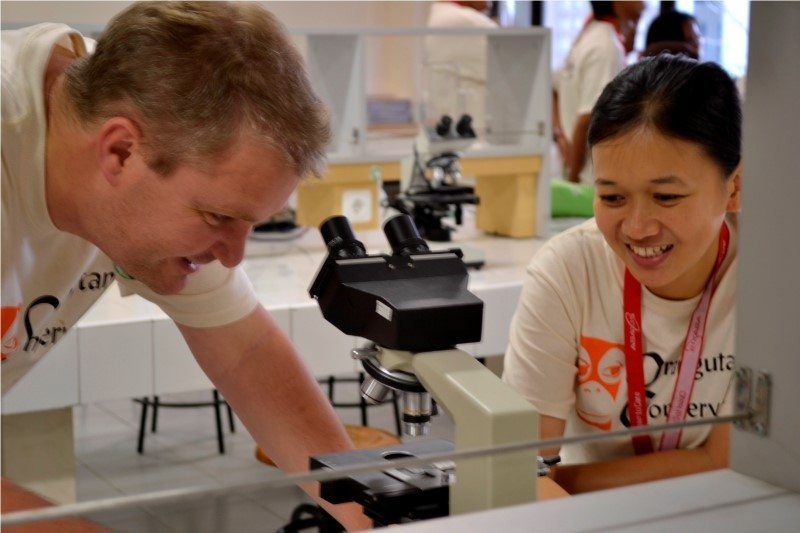
Steve Unwin, Chester Zoo vet, with Siska Sulistyo at a previous OVAG workshop
They will also work with other organisations to enhance their skills and knowledge across a range of disciplines – including primate husbandry and health, conservation management, disease risk analysis, marketing, fundraising and social media – which they can then take back and practice in order to improve the work they’re doing in their day to day jobs.
All staff at Chester Zoo are dedicated to protecting biodiversity and fighting to save species from extinction; whether it’s within the zoo, in the UK or overseas. Every effort goes into ensuring the highest standards of well-being and the best care is given to all animals and their habitat.
Chester Zoo has an in-house team of vets and nurses to provide clinical care to the animals at the zoo. We’ve asked one member of the team to provide us with an insight into his daily activities here at the zoo and how they link to our conservation work both in the zoo and in the field.
“I’m Steve Unwin, one of the veterinary officer’s at Chester Zoo, and I’ve been working here since May 2003.
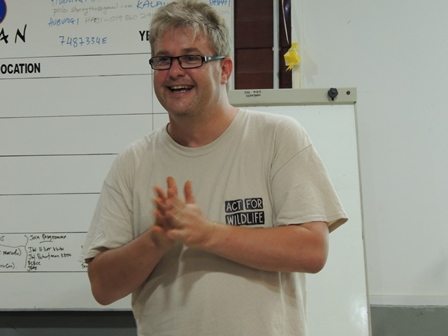
“A typical day for me is untypical! First, the animal health centre team has a 20-30 minute ‘rounds’ – this is where we discuss current cases as a group and work out the plan for the day.
“We can see everything from a spider to an elephant during the course of one day, be it for medical or surgical reasons. A lot of our call outs are for preventative health reasons and we work closely with the animal management and keeper teams to highlight potential issues before they occur and work together to prevent them.
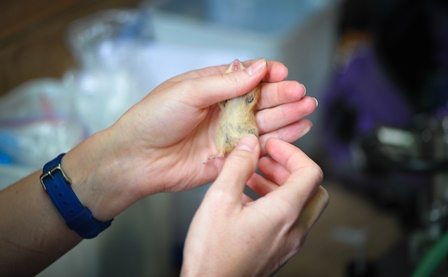
“Beyond the zoo clinical service, the team works closely with the field conservation, science, PR and education teams and is involved in university lecturing, clinical research and field work sporadically throughout each year.
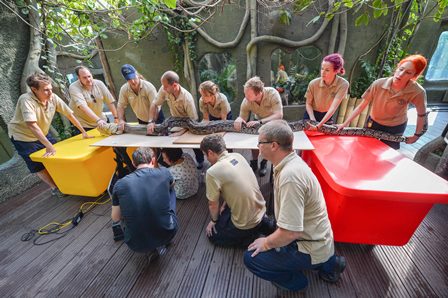
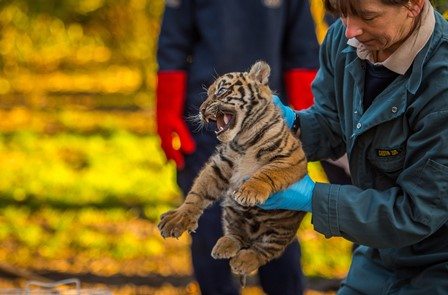
“Our work with the orangutans is largely preventative medicine based, health checks, disease surveillance such as parasitology, and investigation on the rare occasions an orangutan gets sick.
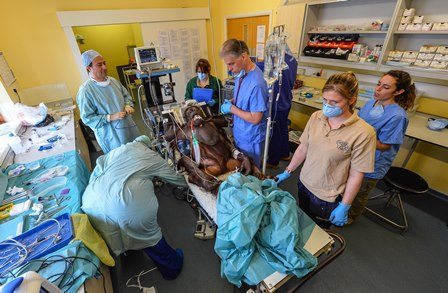
“We are currently working with colleagues all over the world on a multitude of health topics for orangutans and great apes. In Malaysia and Indonesia we are collaborating with colleagues investigating tooth emergence in orangutans. We are also working with the European Aquarium and Zoo Association (EAZA), Orangutan Conservancy – Orangutan Veterinary Advisory Group (OC/OVAG), Cardiff Metropolitan University and the Wellcome Trust Sanger Institute on various projects.
“All of this work (preventative health/ surveillance through to specific investigations) helps orangutans in the wild.
“Here are a couple of examples:
“Our methods of investigating air sacculitis in orangutans (a debilitating disease of the airways) has helped Indonesian and Malaysian vets through our OC/OVAG programme improve the treatment success rates of this disease in centres in Indonesia and Malaysia.
“The tooth emergence study is helping pin down accurate ages based on teeth. This is expected to help decision making in Human – Orangutan Conflict solutions, as our partners in the field are actively involved in orangutan translocation to reduce conflict. The decision on where animals are translocated is based on age – especially when deciding if an animal is a juvenile or a sub-adult.
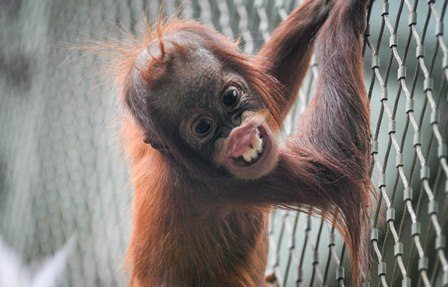
“Although I got into conservation vet work because I want to protect the environment and wildlife, I realise now that conservation is also about people.
“Chester Zoo is an extended family that all realise that by conserving the environment, we are protecting ourselves as the human race. This attitude is enhanced by the amazing people I have the honour of working with in South East Asia and Africa. Seeing all these people be empowered, develop and succeed in protecting the environment and wildlife (whether working at the zoo or for one of our supported programmes) is the defining success for Chester Zoo. It’s that that makes this organisation so great – it’s investment in people to protect the environment.
“Technically as a zoo vet we face many new clinical situations throughout our career, with new species and new emerging disease. This is a challenge, but by working as a team we try to provide the best possible outcome for the animals.
“More philosophically, as in all walks of life, a challenge is often miscommunication – this can lead to unintentional conflict between parties; something particularly poignant for an organisation working across all continents. For the vet work in particular, it is training non-vets in the science and art of emerging infectious disease. Unfortunately people are often more receptive AFTER a disastrous disease outbreak, rather than acknowledging the need to be prepared before such a disaster.
“In addition to the work I do in the zoo, I also work overseas. I work in Africa, Malaysia and Indonesia directly on training and assessing vets, conservation managers and government officials on all aspects of wildlife clinical work, including representing OC/OVAG, and Chester Zoo, in the political arenas of the countries we work in. Part of this work also includes linking our colleagues with each other to increase animal health educational opportunities.
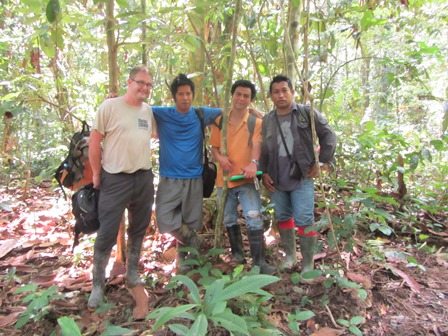
“I am a vet advisor to a conservation impact Non-Government Organisation (NGO) and help assess the conservation impact of conservation NGO’s (including being asked to assess them ‘on the ground’), I am an inspector for the European Alliance of Wildlife rehab centres and sanctuaries (EARS), I am the vet Liaison for the IUCN supported Advisory committee on ape reintroduction – we assess ape reintroduction back to the wild programmes, I am a member of the IUCN wildlife health specialist group, and as such assist with wildlife health advice.”
I am Steve Unwin, veterinary officer at Chester Zoo, and I Act for Wildlife
As Steve mentions above one of the projects we support, which established to safeguard the remaining populations of Sumatran and Bornean orangutans, is the Orangutan Veterinary Advisory Group (OVAG). Read our next blog, containing more information about the project.
Lucy Edwards, lead keeper of the twilight team at Chester Zoo, has recently visited a conservation project in Peru that is working to protect the beautiful Andean bear – also known as the spectacled bear. Through Chester Zoo’s support, the Spectacled Bear Conservation Peru have been able to purchase vitally important camera traps to continue their research on wild spectacled bears. The project is based in the dry forest on the foothills of the Andes in northern Peru.
Lucy tells us more about her trip:
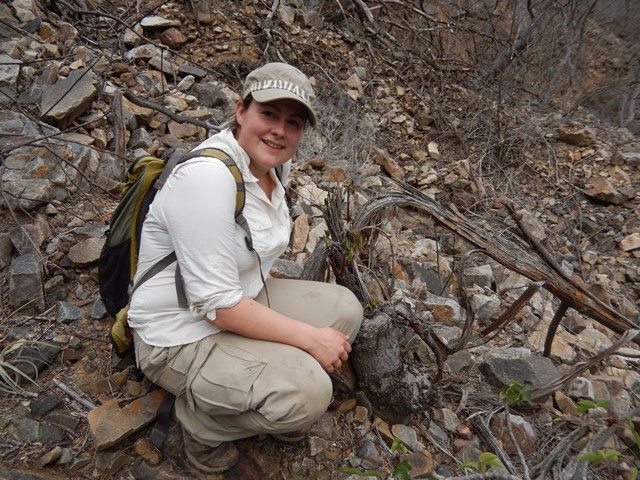
“I have worked at Chester Zoo for four years and have always wanted to work with bears so when I got the opportunity to work with the spectacled bears on twilight section I jumped at the chance. They are my favourite animal – they are so beautiful and unique, as even though they are classed as carnivores they almost completely herbivorous and their vocalisations, such as trilling and humming are wonderful.
“My favourite part of working with the bears is trying to come up with lots of different ways of providing environmental enrichment to keep them both mentally and physically stimulated. I was also very excited to receive our two new bears Bernardo and Lima last year as they will form a breeding pair as part of an international breeding programme in the near future.
“Spectacled bears are the least researched of all the eight species of bears so it is fantastic that the zoo is supporting the Spectacled Bear Conservation Peru project. I was able to go out to Peru and visit the project. The purpose of the trip being to see what work is being carried out and how the zoos support is helping.
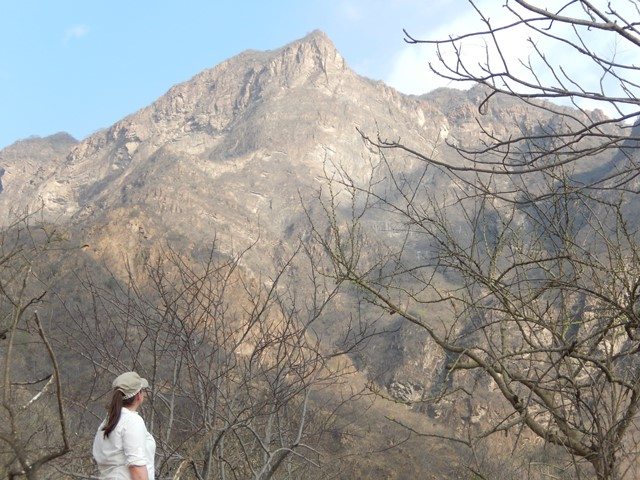
The thing I was most looking forward to on my trip was the chance of seeing a wild spectacled bear in its natural habitat but I knew there was only a very slim chance of seeing one as they are incredibly elusive and notoriously difficult to find.
“The following day after hiking for 3 hours ½ hours up a mountain in 35°C Javier, Jose (2 of the researchers) and I reached a water hole. We settled down and got comfortable, well as comfortable as possible on a floor of rocks, in a hide above the water hole.
“Approximately 10 minutes after we arrived we heard the echoing sound of rocks falling high up on the mountain. The bears were awake! Shortly after this, far in the distance a tiny black spec was visible on the opposite mountain moving down a trail. I reached for my binoculars to discover it was a bear on its way to the water hole.
“Excited does not even come close to how I was feeling but I remained completely still and quiet and waited patiently hoping that the bear would approach. About 10 minutes later Javier whispered ‘Oso’, which means bear in Spanish. Through the many trees I could see a black shape approaching and to my complete surprise a two year old female cub walked right in front of us looking at all three of us as she passed by and without a care she began to drink. I was terrified of making any noise!
“A second, slightly larger bear approached the water hole but only stayed momentarily. Just as my second sighting was beginning to sink in a third bear, the mother of the two year old cub climbed up the rocky terrain towards us. She sniffed around and watched us for a few seconds then casually carried on past us. She had beautiful spectacle markings (the feature which gives this species its name). I couldn’t believe I had already seen three wild bears and it was only 6.30am on my first day in the field. The sun wasn’t even up yet! Suddenly the difficult hike up the mountain was all worth it.
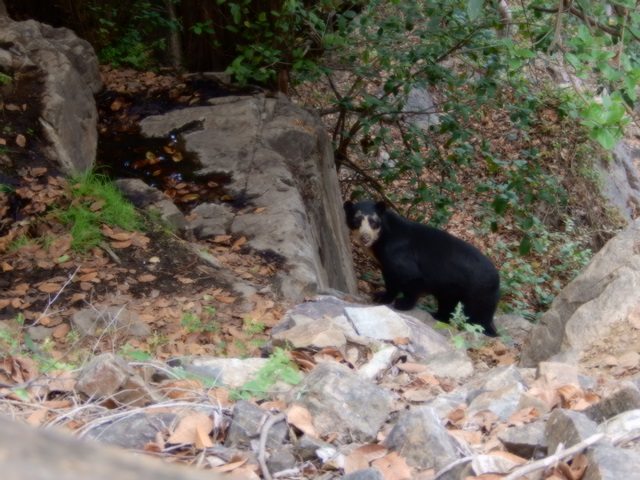
Bears always follow the same trails; it’s how they find their way around. We have noticed our bears at the zoo like to do the same. Once the camera was fitted we needed to test which basically involved crawling down the trail on our hands and knees and seeing if the camera was activated.
“After walking back down the mountain to the camp we decided to check the other side of the mountain for any bear activity. This time we stayed in the valley at the bottom and searched the cliffs for black specs. After my good luck in the morning I didn’t expect to see much more but amazingly after a short while there was a bear, a large male walking along the cliff at some pace. Just above him another bear! The male was pursuing a female (mating season occurs at different times of the year in the southern hemisphere, here at the zoo the bears often mate in May/June). I peered through my binoculars to see the bear’s courtship behaviour (neck biting and pawing each other) then they mated. Only in this area of Northern Peru can spectacled bear behaviour be witnessed first-hand like this due to the open terrain and arid environment. Seeing mating behaviour is a very rare site even for the researchers so I was incredibly grateful to be able to be there at that time.
“I settled down for my first night in the field and aside from the scorpions and all the bugs it was quite comfortable.
“The following day we walked to the other side of the mountain again but this time crossed the valley and climbed a short way up the opposite mountain where we could look for bears. Before we had even reached our destination Javier whispered ‘Oso’ again – my new favourite word. We sat on some rocks and watched through our binoculars as the male from last night was still pursuing the female. This time however the female was accompanied by her 2 year old cub. As the male closed in, the cub retreated to a nearby cave and the pair came together.
“During the hottest part of the day all we could do was sleep but I’m always up for a nap so that was fine by me.
“Later that afternoon two small bears could be seen low down on the mountain feeding on sapote fruit. Sapote fruit is vitally important to spectacled bears in this area as it enables them to put on enough weight to survive the rest of the year when there is very little food available. This was thought to be the female cub and her sibling. That brought my total bear siting count up to five but that was the end of my luck as they were the last bears I saw.
“After five days in the field we returned to the conservation centre in Batan Grande. Here I met the local women who make hand felted products to raise money for the project. I got the chance to make my own spectacled bear which I modelled on Franka (one of our bears at Chester Zoo). Admittedly it was not quite the standard they were used to but it made a nice souvenir.
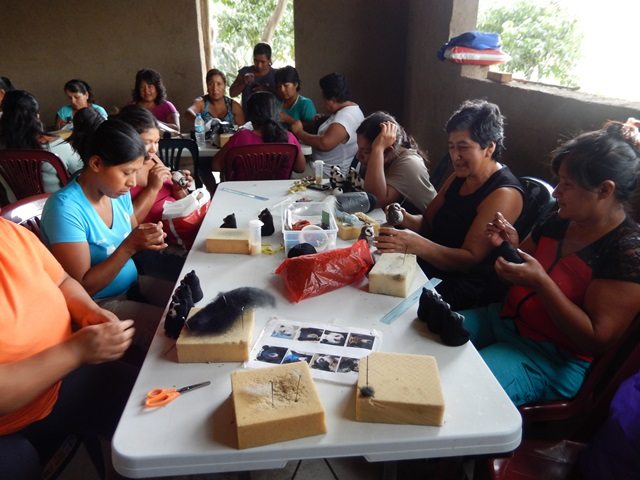
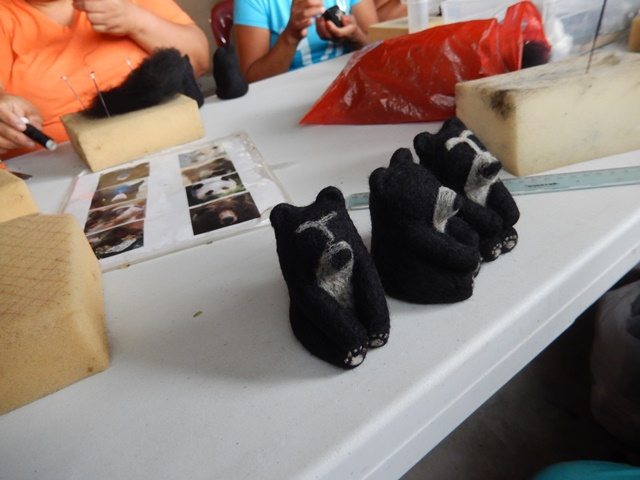
“The rest of my trip was spent visiting some of the other areas where the researchers observe the bears and the area the project is hoping to expand the research into. This area was beautiful as all the trees and cliffs were covered in bromeliads. It reminded me of Paradise falls from the Pixar film ‘Up’.
“Whilst seeing the bears in their natural habitat in Peru I realised just how adaptable this species must be to survive. It also inspired me to try out some more enrichment ideas to challenge our bears at the zoo.”
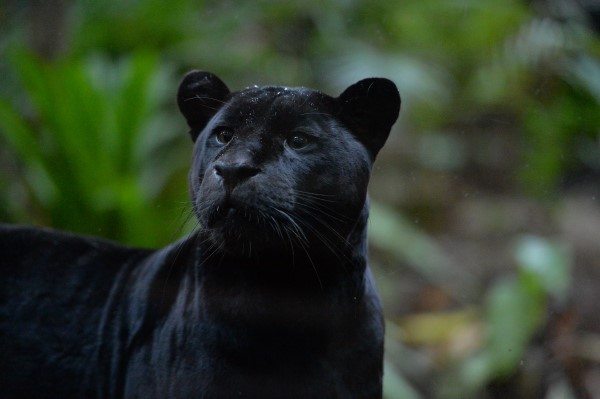
Donate now and 100% of your money will be used to help save wildlife in Latin America.
“Black-eyed tree frogs are part of a very important research project here at Chester Zoo, looking into their dietary requirements. In fact the zoo’s Nutritionist, Andrea Fidgett will be blogging more information about them next week.
“The research Andrea has been involved in supports our aims for this project – which are to develop husbandry skills with the species which we can then transfer and share with colleagues at the Belize Zoo and the Belize Vivarium – two organisations keen to be involved in a zoo breeding and possible reintroduction program.
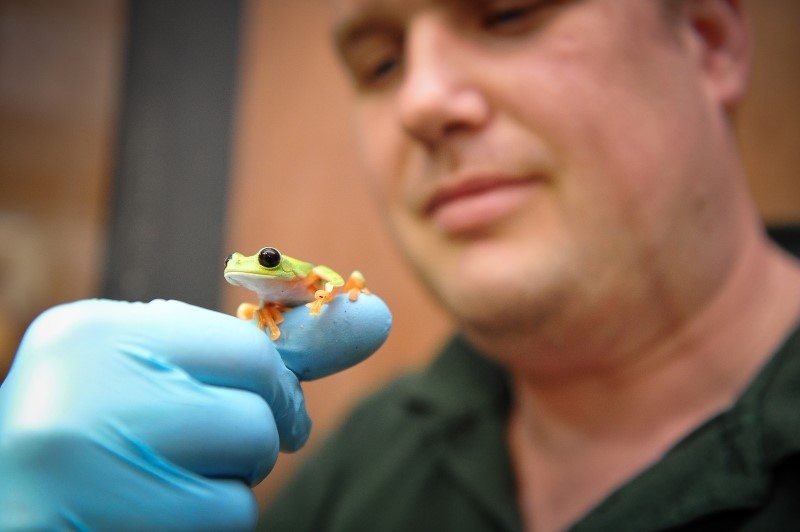
“Like many amphibians these guys can change colour to blend in with the foliage around them – check out the difference in the two photos. However some frogs, including black-eyed tree frogs have a special skin pigment that allows them to reflect UV light at the same level as the leaves, making them even more difficult to distinguish. The other benefit of this skin pigment is that it allows then to sit on top of leaves without getting too hot or burnt – it’s like having built in factor50.
“Now classed as critically endangered by the IUCN, the black-eyed tree frog was once found in Mexico, Honduras, Nicaragua, Guatemala and Belize but has become scarce with some populations vanishing entirely.
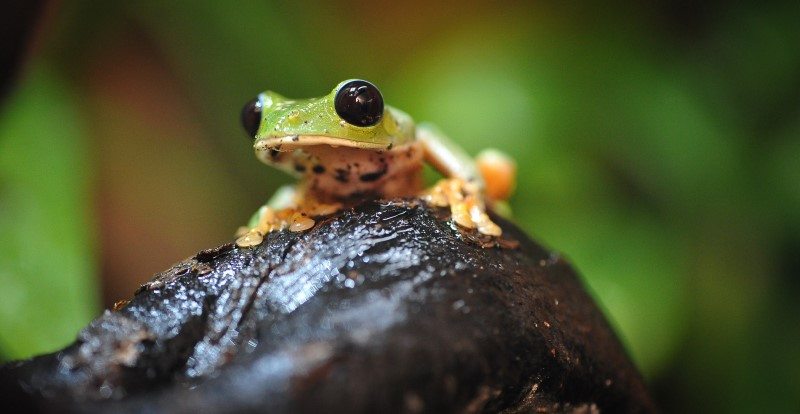
“Over the next few months we’re looking into two more research programs both of which will help us develop a conservation action plan for the species within Belize. Out in the wild we need to work with our partners to do some more field studies in order to establish the distribution of the species, identify the presence of Chytrid fungus and to then look for habitats suitable for the possible translocation or reintroduction of the species.
“And if you want to see the frogs and their amazing skin in action, they can be found in Chester Zoo’s Tropical Realm. Have a look and see how many you can spot. I think you’ll agree they’re pretty stunning frogs and definitely worth protecting from extinction.”
I am Ben Baker, lower vertebrates & invertebrates team manager at Chester Zoo, and I Act for Wildlife